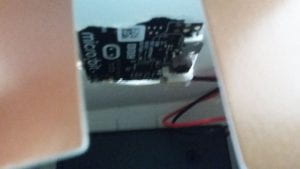So… it’s basically a device that generates equations
While I used subtraction in my example, it can also generate addition equations with the right code (The only reason I didn’t write that, or the multiplication and division codes was because it would take forever to draw all the numbers and scenarios… but if someone wanted them I might :)).
Here is an example on how the device is to be used, instructions, view from different angles, and the mechanics at work inside.







What is the overall topic and goal of your project?
I’ve read and seen quite a few articles and videos of children living in environments where they can’t get the education I have. Therefore, I decided to create a gadget that allows young kids to practice their math skills, that could function without internet, was durable, and takes up very little space.
What tool did you use and what did you learn about it?
I chose MicroBit because I am interested in artificial intelligence and coding, and it seemed like the most AI option. While I did do a bit of MicroBit Coding in Grade 7, it never went past the game tutorials. It was a fun challenge for me to create something new (it’s new as far as I know, which, admittedly, isn’t very far, so…) and I really enjoyed the process.
How has the process of utilizing this tool impacted your understanding of how technology can change (or help) the world?
Making the Equation Generator really made me realize that there isn’t much that I can do now that hasn’t already been done, and that what I made is very basic. The equation generator is a lot more limited and expensive than most websites that offer help with math. Still, devices like mine can replace humans in some places, giving humans the time needed to create even more complex and versatile devices. Regardless of what the future holds, I know that AI is going to play a large part in it.








